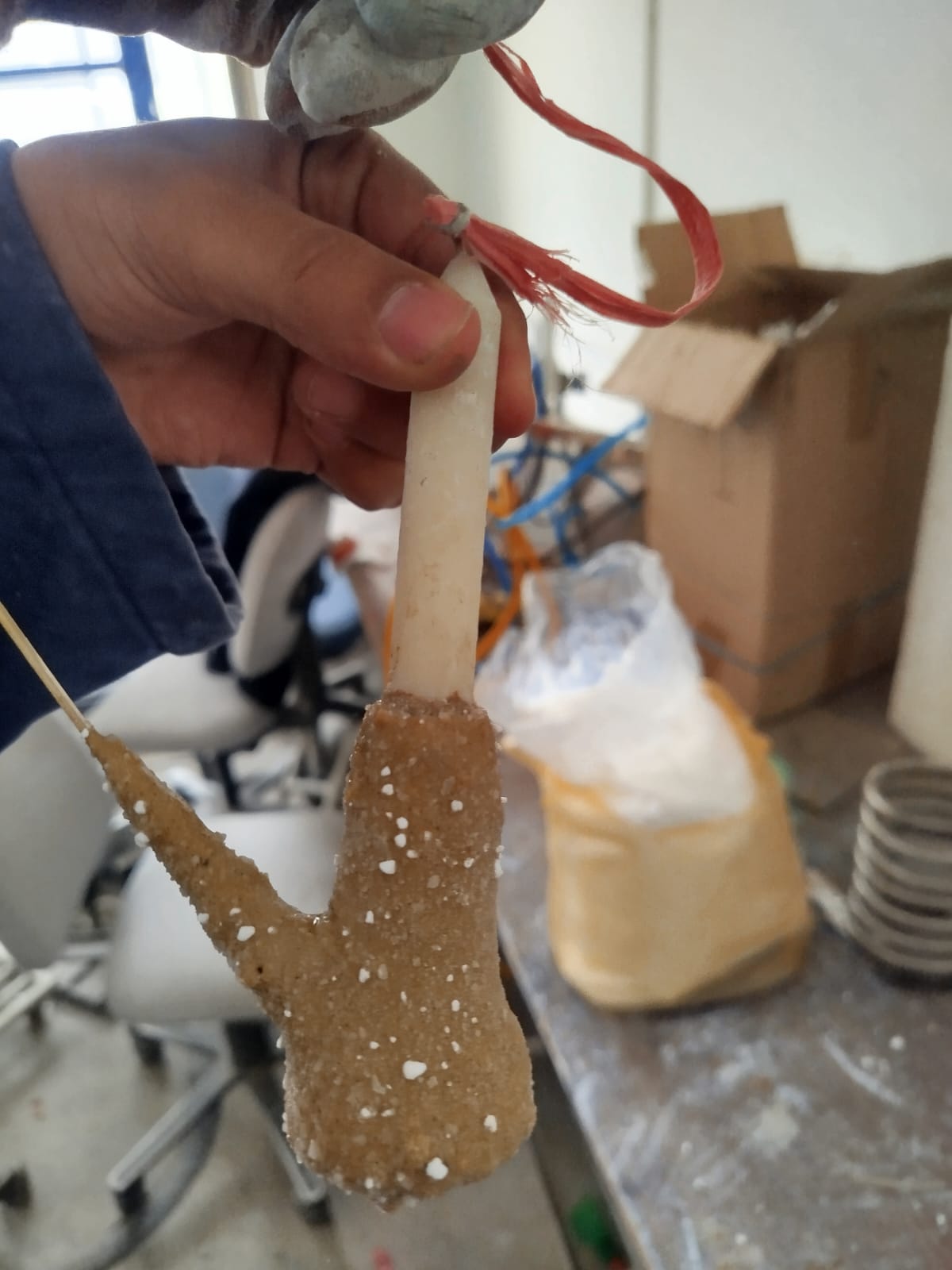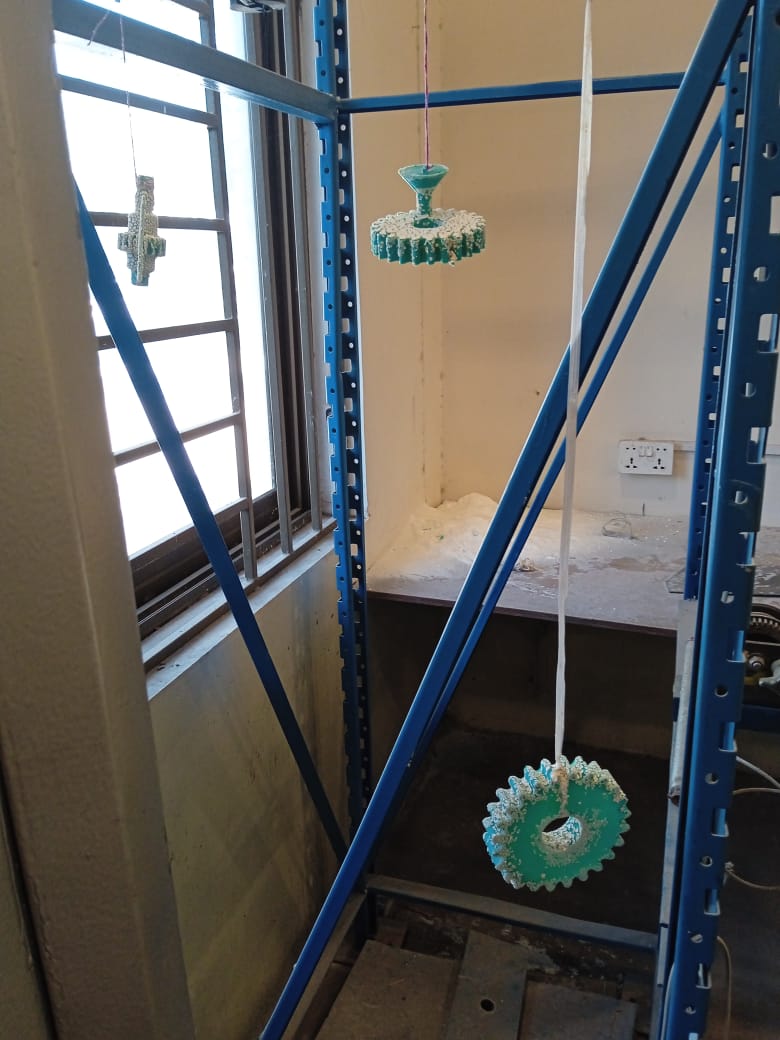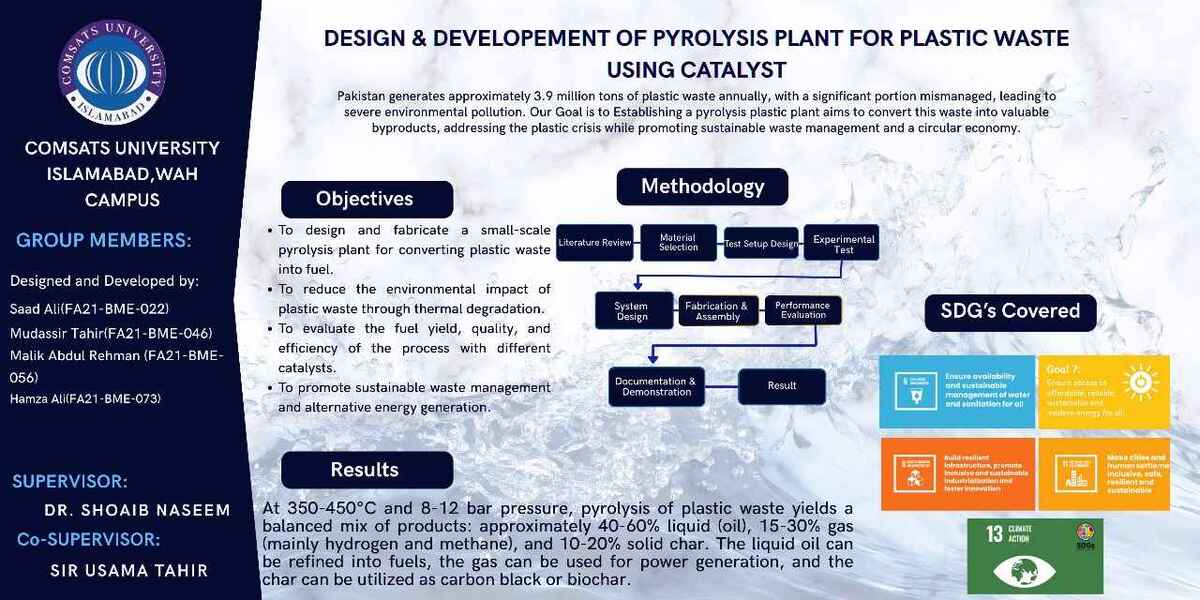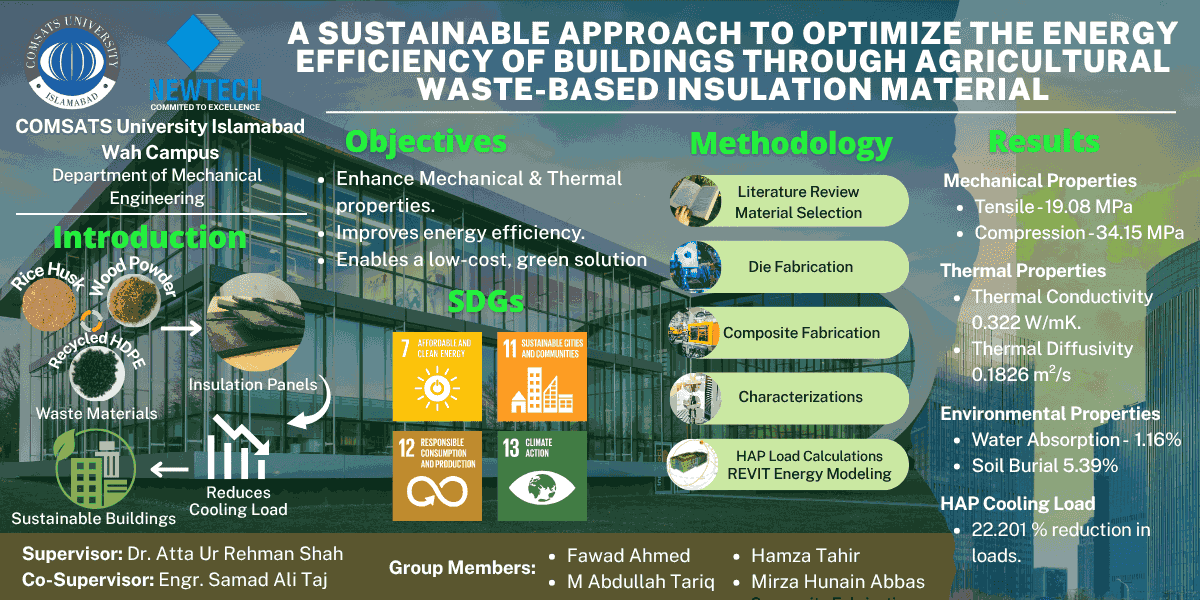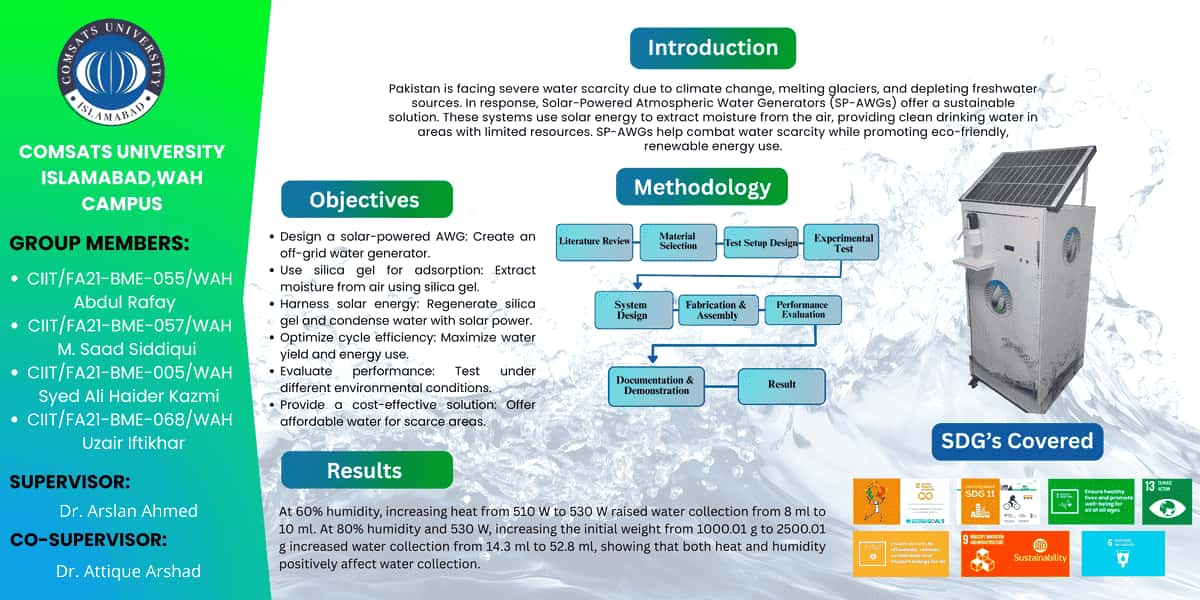Objectives
The primary objective of this Final Year Project is to investigate and optimize the application of advanced ceramic materials for mold fabrication in the lost wax casting process. This involves:
• Identifying and evaluating suitable advanced ceramic materials that are cheaper than zircona and collidal silica like expensive chemicals and that offer improved performance over traditional investment casting materials.
• Developing and refining the process parameters for creating ceramic molds with the desired properties, including dimensional accuracy, surface finish, and strength.
• Demonstrating the feasibility and benefits of using these advanced ceramic molds by successfully casting metal components with complex geometries.
• Analyzing and characterizing the properties of the cast components produced using advanced ceramic molds in comparison to those made with conventional methods.
• Potentially exploring specific applications where advanced ceramic-based lost wax casting can offer significant advantages.
Socio-Economic Benefit
The successful implementation of "Advanced Ceramic Based Lost Wax Casting" has the potential to yield several significant socio-economic benefits:
• Enhanced Product Quality and Performance: Advanced ceramic molds can enable the casting of metal parts with superior dimensional accuracy, smoother surface finishes, and improved mechanical properties. This translates to higher quality end products across various industries, leading to increased durability, efficiency, and customer satisfaction.
• Reduced Material Waste and Production Costs: The precision offered by advanced ceramic molds can minimize the need for extensive post-casting machining, thereby reducing material waste and overall production costs. This increased efficiency can lead to more competitive pricing and greater profitability for manufacturing industries.
• Creation of High-Skilled Jobs: Research, development, and implementation of this advanced casting technology will necessitate a skilled workforce in materials science, ceramics engineering, manufacturing processes, and quality control, leading to the creation of high-value jobs.
• Innovation and Technological Advancement:** This project contributes to the advancement of materials science and manufacturing technologies within Pakistan. Successful outcomes can spur further innovation in related fields and enhance the country's technological capabilities.
• Support for Local Industries: By providing local industries with access to advanced casting techniques, this project can enhance their competitiveness both domestically and internationally. This can lead to increased exports, economic growth, and job creation within the local economy.
• Potential for Import Substitution: The ability to produce high-quality, complex metal components locally using advanced ceramic-based lost wax casting can reduce reliance on expensive imports, saving valuable foreign exchange and strengthening the national economy.
• Applications in Strategic Sectors: High-precision casting is crucial in strategic sectors such as aerospace, defense, and medical device manufacturing. Advancements in this area can bolster these critical industries and contribute to national security and public health.
• Environmental Benefits (Potentially): Depending on the specific advanced ceramic materials and manufacturing processes employed, there could be potential environmental benefits compared to traditional methods, such as reduced energy consumption or lower generation of hazardous waste. This aspect would require further investigation within the project.
In essence, this project has the potential to contribute to a more technologically advanced, economically robust, and competitive industrial sector in Pakistan, while also fostering job creation and potentially offering environmental advantages.
Methodologies
The project methodology for "Advanced Ceramic Based Lost Wax Casting" will involve a systematic approach encompassing material selection, mold fabrication, casting trials, and comprehensive characterization. The key stages are outlined below:
Phase 1: Literature Review and Material Selection (Weeks 1-4)
• A thorough review of existing literature on lost wax casting, advanced ceramic materials (e.g., alumina, zirconia, silica-based ceramics), slurry preparation techniques, and mold characterization methods will be conducted.
• Based on the literature review and project objectives, specific advanced ceramic materials exhibiting desirable properties such as high refractoriness, low thermal expansion, chemical inertness, and fine particle size will be selected for experimentation.
• Different binder systems, additives, and processing aids compatible with the chosen ceramic materials will also be investigated.
Phase 2: Slurry Preparation and Mold Fabrication (Weeks 5-10)
• Optimized slurry formulations will be developed by varying the solid loading, binder concentration, and additive content of the selected ceramic materials. Slurry properties such as viscosity, density, and sedimentation behavior will be carefully controlled and characterized using techniques like viscometry and particle size analysis.
• Wax patterns of a chosen complex geometry will be fabricated using standard wax injection molding techniques.
• The developed ceramic slurries will be used to create ???????? molds around the wax patterns using dipping and stucco application methods. Multiple layers with varying particle sizes of stucco material will be applied to achieve the desired mold thickness and strength.
• The coated wax patterns will be allowed to dry under controlled environmental conditions to ensure proper mold setting and prevent cracking.
Phase 3: Wax Removal and Mold Firing (Weeks 11-13)
• The wax removal process (dewaxing) will be carried out using a suitable method, such as steam autoclaving or furnace burnout, with optimized temperature cycles to minimize mold damage.
• The dewaxed ceramic molds will be fired in a high-temperature furnace according to a carefully designed temperature profile to achieve the desired ceramic sintering and strength. The firing temperature and holding time will be optimized based on the selected ceramic material.
Phase 4: Casting Trials (Weeks 14-16)
• Casting trials will be conducted using a selected metal alloy (e.g., aluminum alloy, bronze) with the fabricated advanced ceramic molds. Standard melting and pouring procedures will be followed.
• Different pouring temperatures and cooling rates may be investigated to assess their impact on the quality of the cast components.
Phase 5: Characterization and Analysis (Weeks 17-20)
• The fabricated ceramic molds will be characterized in terms of their density, porosity, surface roughness, and flexural strength using appropriate testing methods (e.g., Archimedes' principle, profilom
Outcome
After conducting of 6-7 tests with varying compositions and chemicals, all resulting in cracking of the initial coatings, the project outcomes can be stated as follows:
• Identification of Critical Formulation Challenges: The series of tests revealed significant challenges in formulating a stable initial coating for the advanced ceramic-based lost wax casting process. The consistent cracking across multiple composition and chemical variations indicates a sensitivity to the chosen materials and processing parameters at the initial coating stage.
• Determination of Unsuitable Material Combinations or Processing Parameters: The repeated failure suggests that the tested combinations of advanced ceramic materials, binders, additives, or application techniques for the initial coating were not compatible or were subjected to unsuitable processing conditions (e.g., drying rates, layer thickness, chemical interactions).
• Establishment of Constraints for Future Research: The findings from these unsuccessful tests provide valuable constraints and insights that can guide future research efforts. Understanding which compositions and chemicals lead to cracking helps narrow down the search space for viable solutions.
• Need for Further Investigation into Initial Coating Mechanisms: The consistent cracking highlights the necessity for a more in-depth investigation into the underlying mechanisms causing this failure. This could involve analyzing the rheological properties of the slurry, the interaction between the ceramic particles and the wax pattern, and the stresses developed during the initial drying and setting stages.
• Demonstration of the Complexity of Advanced Ceramic Slurry Development: The repeated failures underscore the complexity involved in developing stable and defect-free advanced ceramic slurries for investment casting, particularly at the crucial initial coating stage where adhesion and crack resistance are paramount.
• Potential Need for Alternative Materials or Techniques: The persistent cracking may indicate the need to explore alternative advanced ceramic materials, different binder systems, or entirely new application techniques for the initial coating to overcome the observed limitations.
In summary, while the direct goal of producing crack-free molds was not achieved during these initial tests, the outcomes provide crucial negative results that are essential for understanding the limitations of the tested approaches and for directing future research towards more promising avenues. The project has successfully identified a key challenge in the initial coating stage and highlighted the need for a more fundamental understanding of the material interactions and processing parameters involved.
• So now we are doing it with an alternative test by using plaster of Paris,kaolin clay and bentonite clay to achieve our desired product.

